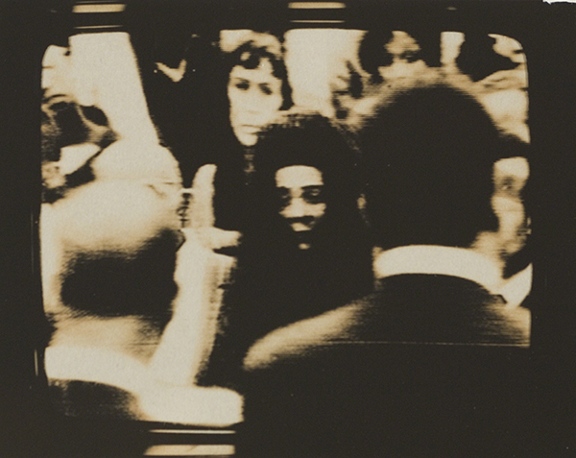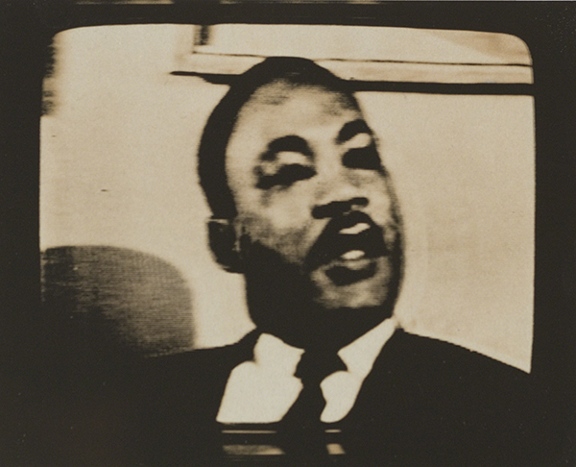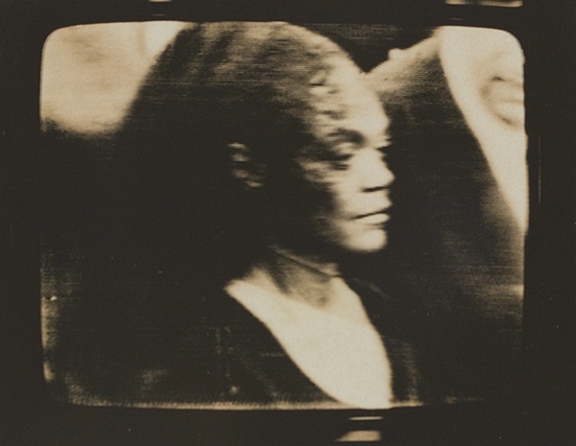Martin Luther King Jr. Day: Dean Brown
This year, Martin Luther King Jr. Day falls on the actual birthday of this great American leader. To mark the day, I will show you the work of photographer Dean Brown. The artist died way too young pursuing his love of landscape photography, which became his passion after he had produced this remarkable series of photographs.
 |
| Dean Brown (1936–1973, U.S.), Untitled, from the Martin Luther King Jr. Funeral series, 1968. Gelatin silver image on orthochromatic film, 3 ½" x 4 ½" (8.9 x 11.4 cm). Courtesy of the Philadelphia Museum of Art. © 2024 Artist or Estate of Artist. (PMA-3800) |
The Martin Luther King Jr. Funeral series was Brown’s first photographic portfolio. One of the different processes and techniques that Brown explored was television. Deeply affected by the assassination of Dr. King in 1968, Brown created an emotional tribute to King while pioneering a totally novel approach to documentary photography. Brown was fascinated by television’s infiltration into modern society and that the general perception was that the television was a purveyor of “reality.” As such, photographing directly from the television screen created, in Brown’s conception, a truly modern type of documentary photograph.
The King series not only made an important personal comment about the tragedy, but also commented on modern society’s reliance on modern technology to transmit information. Brown took hundreds of photographs sequentially, selecting and exhibiting photographs of key moments. The Kodalith (orthochromatic) film that he used negated details to create strong compositions. Orthochromatic film is sensitive to blue (which would appear white) and ignores red (which would appear black).
 |
| Dean Brown (1936–1973, U.S.), Untitled, from the Martin Luther King Jr. Funeral series, 1968. Gelatin silver image on orthochromatic film, 3 ⅝" x 4 ½" (9.2 x 11.4 cm). Courtesy of the Philadelphia Museum of Art. © 2024 Artist or Estate of Artist. (PMA-3779) |
 |
| Dean Brown (1936–1973, U.S.), Untitled, from the Martin Luther King Jr. Funeral series, 1968. Gelatin silver image on orthochromatic film, 3 1/16" x 4 ½" (7.8 x 11.4 cm). Courtesy of the Philadelphia Museum of Art. © 2024 Artist or Estate of Artist. (PMA-3786) |
One of the biggest developments in photography and its relationship with art coincided with the Conceptualism movement of the 1960s and 1970s. Conceptualism theorized that the idea behind an artwork was as significant as the completed work, if not more so. This theory, although it seemed to denigrate every aspect of traditional art production, actually opened artists up to new interpretations of not only subject matter, but media. John Baldessari (1931–2020), a Conceptual artist whose work was greatly augmented with photographs, hypothesized around 1967 that the camera was no longer a mere recorder of facts.
This attitude marked a graphic change from “art photography” of previous periods. Artists no longer wanted to use the camera primarily to imitate “fine art,” i.e., painting. Post-World War II (1939–1945) photographers gradually began to look at the camera for what it could do, rather than what it could imitate. While exploring the possibilities of dematerializing art or critiquing the visual prevalence of mass media, artists discovered fresh possibilities in the medium.
Brown was born in Newport News, Virginia. He exhibited early talents in photography, making and developing photos from the time he was ten years old. He began studying linguistics at Cornell University in 1954, and subsequently earned a BA in musicology from Brooklyn College in 1961 and an MFA in musicology from New York University in 1965. After a brief stint teaching music at Brooklyn College, Brown gave up teaching in 1967 to devote himself full time to photography, which was a hobby up to that point.
During his early years as a dedicated photographer, Brown experimented with processes while making a living as a portrait photographer. By 1969, his portraits of fellow musicians had appeared in many magazines. That year, while on a trip to the American Southwest, Brown became enthralled with the brilliance of light and clarity of forms in the natural world. From that time until his tragic, premature death on a hiking trip in New Hampshire, Brown produced color photographs only of landscapes, mastering the difficult dye-transfer process.
Correlations to Davis programs: Experience Art: 2.1; A Community Connection: 7.2, 7.3; The Visual Experience 4E: 9.1; Focus on Photography 2E: pp. 171–173; Discovering Art History 4E: 14.5


Comments